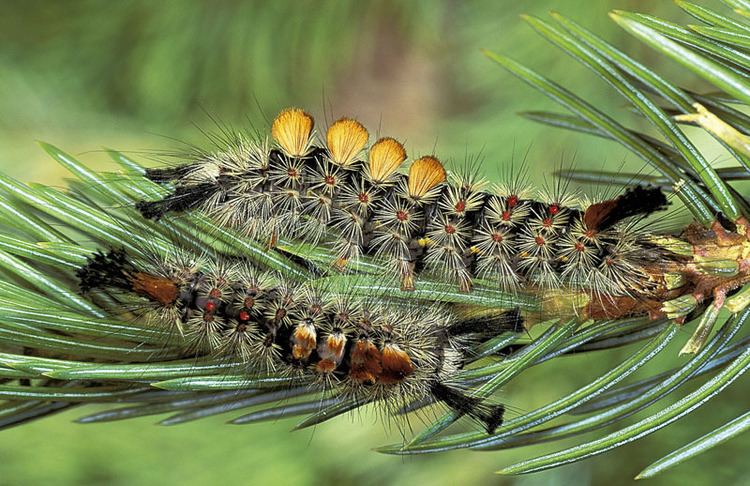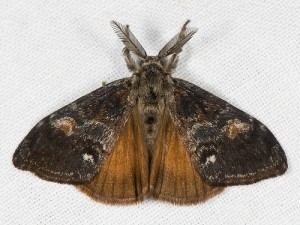Family Lymantriidae Rank Species | ||
 | ||
Similar Orgyia, Nuclear Polyhedrosis Virus, Autographa californica, Lymantriinae, Spruce budworm | ||
The Douglas-fir tussock moth (Orgyia pseudotsugata) is a moth of the Lymantriidae family found in western North America. Its population periodically irrupts in cyclical outbreaks. The caterpillars feed on the needles of Douglas fir, true fir, and spruce in summer, and moths are on the wing from July or August to November.
Contents

Description

Adult males are grayish brown moths with mottled light and dark markings. The males' wingspread is 25–34 mm (0.98–1.34 in). When the wings are spread open, the brown hind wings can be seen. Individuals in the northern part of its range are darker in color and southern populations are lighter. Antennae are plumose (feathery). Females are flightless with only rudimentary wings. Larvae (caterpillars) are 20–26 mm (0.79–1.02 in) and colorful with red spots, white spines, conspicuous red-tipped white tufts or “tussocks“, and dense bunches of long, black hairs projecting to the front and behind.
Range and host plants

The Douglas-fir tussock moth is native to forests of western North America and outbreaks have been identified in British Columbia, Idaho, Washington, Oregon, Nevada, California, Arizona, and New Mexico. Outbreaks occur in cycles around eight to 12 years and usually last up to four years, sometimes longer. Reports from Idaho and Washington indicate 2011 had a major outbreak. The larvae feed on Pseudotsuga and Abies species, especially Douglas fir, grand fir, white fir, and subalpine fir.
Life cycle

Eggs hatch in spring (May to June) and the young larvae begin feeding on new foliage (the current season’s growth of needles). Later, they feed on both new and old foliage. The movement of the caterpillars is the main means of biological dispersal. They produce long, silky threads which can catch the wind when they drop from one branch to another. They produce loose webbing which forms a netting. In this cocoon, they pupate in July or August. Adults emerge and are active as late as November. The flightless females stay near the cocoons from which they emerged and mate straight away. Eggs are spherical and white and are laid in a mass which protects them through winter. Because the female is sedentary, population outbreaks always form in place.
Management

One key to management of outbreaks is detection. Entomologists monitor forests using an “early warning system” of pheromone-baited traps. Outbreaks subside on their own, but silvicultural techniques for managing affected timber can be employed, or the chemical carbaryl can be sprayed aerially.
